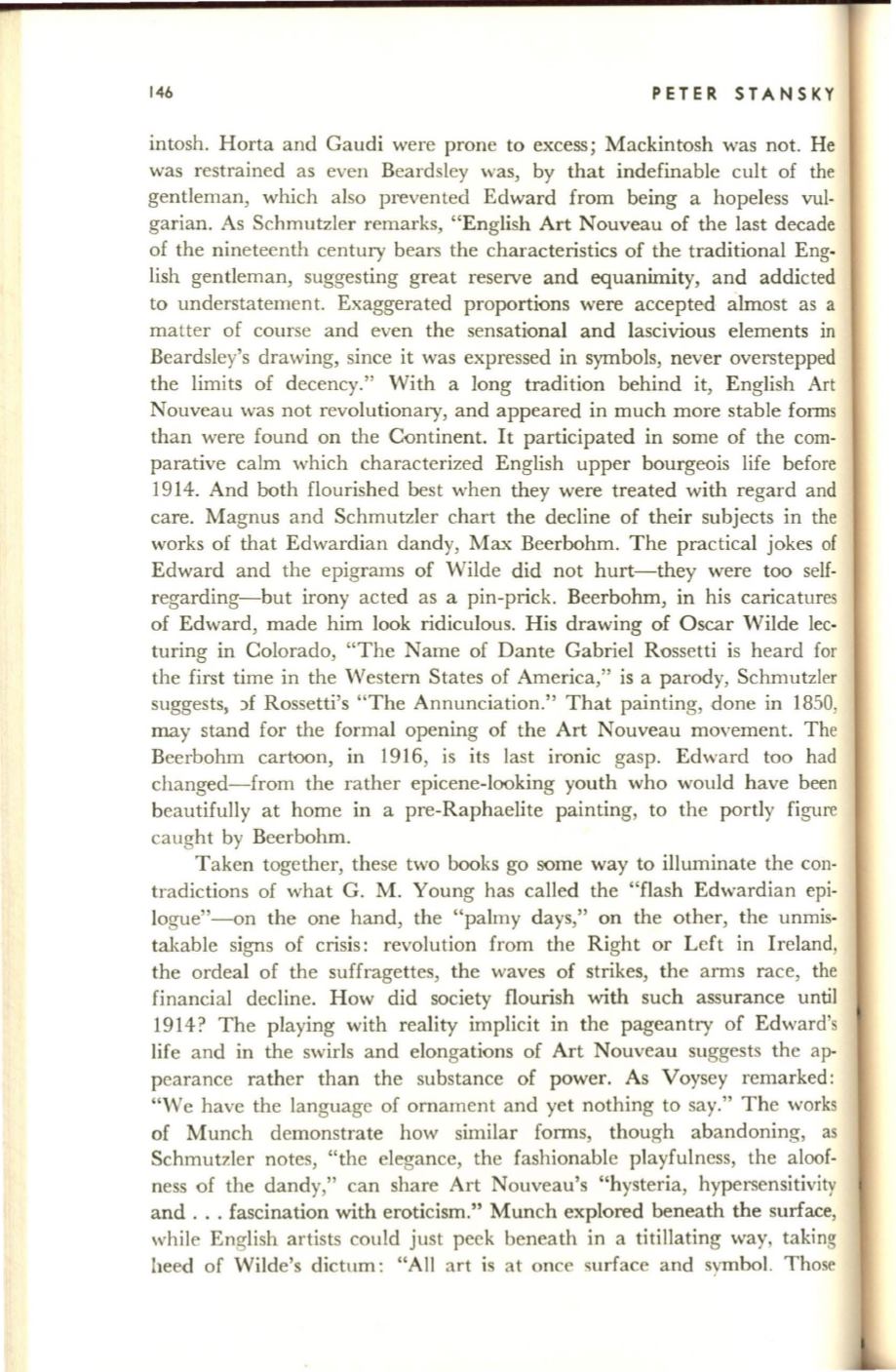
146
PETER STANSKY
intosh. Horta and Gaudi were prone to excess; Mackintosh was not. He
was restrained as even Beard ley was, by that indefinable cult of the
gentleman, which also prevented Edward from being a hopeless vul–
garian. As Schmutzler remarks, "English Art Nouveau of the last decade
of the nineteenth century bears the characteristics of the traditional Eng–
lish gentleman, suggesting great reserve and equanimity, and addicted
to understatement. Exaggerated proportions were accepted almost as a
malter of course and even the sensational and lascivious elements in
Beardsley's drawing, since it was expressed in symbols, never overstepped
the limits of decency." With a long tradition behind it, English Art
Nouveau was not revolutionary, and appeared in much more stable forms
than were found on the Continent. It participated in some of the com–
parative calm which characterized English upper bourgeois life before
1914. And both flourished best when they were treated with regard and
care. Magnus and Schmutzler chart the decline of their subjects in the
works of that Edwardian dandy, Max Beerbohm. The practical jokes of
Edward and the epigrams of Wilde did not hurt-they were too self–
regarding-but irony acted as a pin-prick. Beerbohm, in his caricatures
of Edward, made him look ridiculous. His drawing of Oscar Wilde lec–
turing in Colorado, "The Name of Dante Gabriel Rossetti is heard for
the first time in the Western States of America," is a parody, Schmutzler
suggests, )f Rossetti's "The Annunciation." That painting, done in 1850,
may stand for the formal opening of the Art Nouveau movement. The
Beerbohm cartoon, in 1916, is its last ironic gasp. Edward too had
changed-from the rather epicene-looking youth who would have been
beautifully at home in a pre-Raphaelite painting, to the portly figure
caught by Beerbohm.
Taken together, these two books go some way to illuminate the con–
tradictions of what G. M. Young has called the "flash Edwardian epi–
logue"-on the one hand, the "palmy days," on the other, the unmis–
takable signs of crisis: revolution from the Right or Left in Ireland,
the ordeal of the suffragettes, the waves of strikes, the arms race, the
financial decline. How did society flourish with such assurance until
1914? The playing with reality implicit in the pageantry of Edward'
life and in the swirls and elongations of Art Nouveau suggests the ap–
pearance rather than the substance of power. As Voysey remarked:
"We have the language of ornament and yet nothing to say." The works
of Munch demonstrate how similar forms, though abandoning, as
Schmutzler notes, "the elegance, the fashionable playfulness, the aloof–
ness of the dandy," can share Art Nouveau's "hysteria, hypersensitivity
and. _. fascination with eroticism." Munch explored beneath the surface,
while English artists could just peek beneath in a titillating way, taking
heed of Wilde's dictum: "All art is at once surface and symbol. Those


